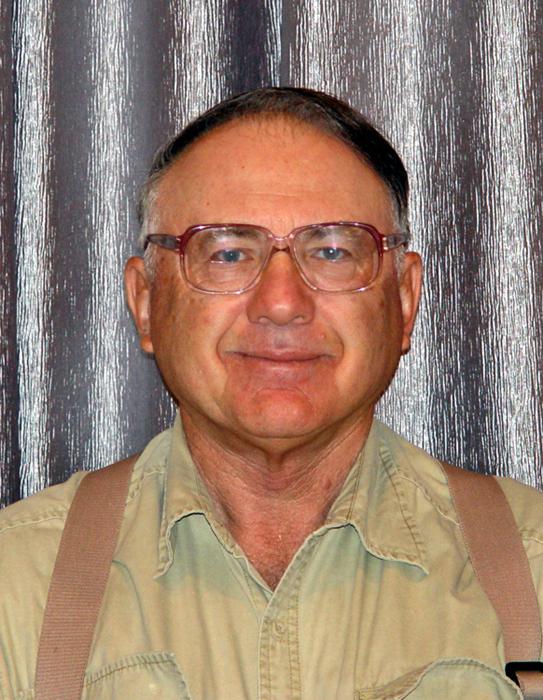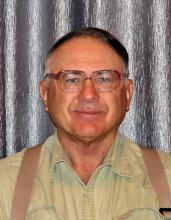Information Possibly Outdated
The information presented on this page was originally released on February 2, 2006. It may not be outdated, but please search our site for more current information. If you plan to quote or reference this information in a publication, please check with the Extension specialist or author before proceeding.
New rice provides strong yields and disease resistance
By Robert H. Wells
Delta Research and Extension Center
STONEVILLE -- Mississippi State University's recent release of Pace means Delta rice growers no longer have to choose between a high yield or a solid disease package.
“Pace is a long-grain, high-yielding, semi-dwarf variety with good straw strength and field tolerance to sheath blight and blast diseases,” said Pace's developer Dwight Kanter, a rice breeder at MSU's Delta Research and Extension Center in Stoneville.
“It averaged eight bushels an acre more than Cocodrie across all seven test locations in our on-farm variety trials in 2005,” Kanter said.
For rice growers who want disease protection, like Ronnie Aguzzi of Aguzzi Brothers Farms in Bolivar County, Pace is just the type of rice they are looking to plant.
“I think a strong disease package is one of the best things to have, especially when it's tied in with a high yield,” Aguzzi said.
The Aguzzi Brothers know the savings possible with growing disease-tolerant rice and eliminating costly fungicide applications because they have grown Pace's genetic predecessor, Priscilla, for years.
“Priscilla always did better than some of the other varieties,” Aguzzi said. “Our experience has been that it looked like it didn't catch as many diseases. If Pace performs as well as Priscilla, it's going to be a good rice.”
Steve Martin, an agricultural economist at the Delta center, estimates that fields planted in Pace could save more than $30 per acre because of its disease tolerance.
“The reduction in fungicide costs compared to Cocodrie for those fields that would require a spray could mean as much as $25 to $30 per acre lower production costs for Pace,” Martin said. “Additionally, based on a three-year average of rough rice yields and milling yields, Pace has about a $6 per acre advantage compared to Cocodrie.”
Mississippi Agriculture and Forestry Experiment Station plant pathologist Gabe Sciumbato said growers using Pace would have an assurance against disease outbreaks that popular varieties Cocodrie and Cheniere cannot offer, and that they would see a significant reduction in fungicide costs.
“In a lot of cases, they could avoid a fungicide application altogether,” Sciumbato said.
As for nitrogen requirements, Pace's demands are similar to current popular varieties such as Cocodrie and Cheniere, according to Tim Walker, a MAFES rice agronomist.
“For heavy clay soils, Pace will need 120 to 150 pounds of nitrogen per acre applied preflood and 30 to 60 pounds of nitrogen at midseason,” Walker said. “For silt loam soils, Pace will require 90 to 120 pounds of nitrogen per acre preflood and 30 to 60 pounds of nitrogen per acre at midseason.”
“This is very comparable to what is needed for Cocodrie and other varieties,” Walker said.
Kanter said Pace's lodging rate is also comparable to Cocodrie's and even slightly better by about 4 percent.
“Over a six year period, Pace averaged a 13 percent lodging rate compared to Cocodrie's 17 percent,” he said. “It also endured Hurricane Katrina just as well as the other varieties, and it had a minimum amount of shattering, if any.”
Kanter said Pace's milling percentages, on the other hand, are slightly less than that of Cocodrie.
The rice breeder said Pace averaged about 5 percent less in whole milling yield than Cocodrie in 2005 and 2004 and about 3 percent less than the popular variety in 2003.
“However, for any variety, harvesting at the optimum grain moisture level gives the potential for higher milling yields,” Kanter said.
Data on Pace's performance against the physiological disorder of straighthead will be released in the weeks ahead. However Kanter noted that straighthead symptoms have not been observed on Pace in the numerous on-farm trials conducted during the past several years.
The news of a high yielding successor to Priscilla may sound promising to Delta rice farmers such as the Aguzzi Brothers, but they still must wait for registered seed producing companies to purchase and grow the seed this season in order for plenty of Pace to be available in 2007.
Rice growers interested in Pace should consult now with their registered seed dealer so Pace will be available to them commercially next year.




